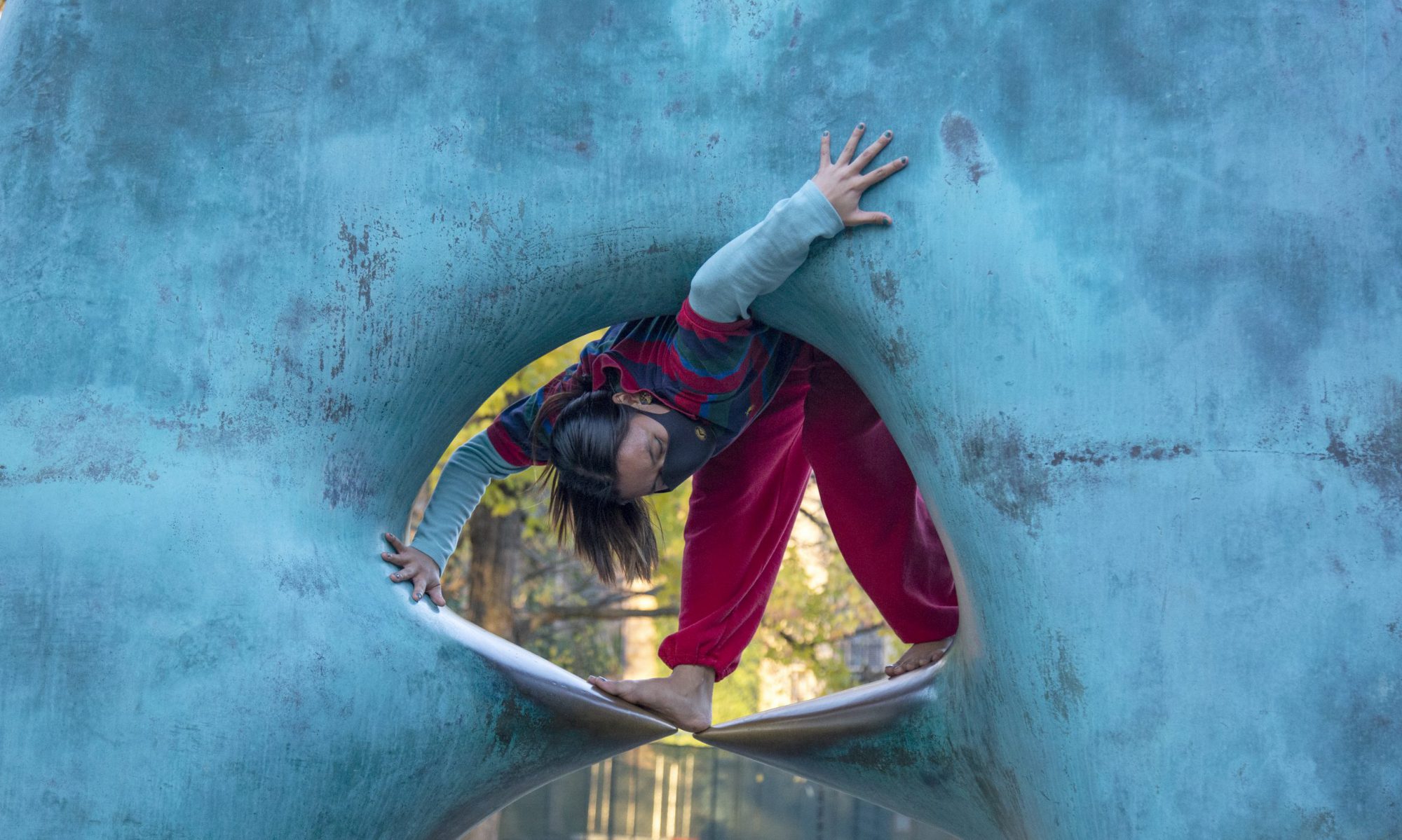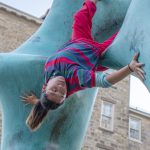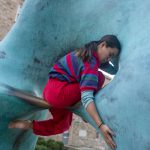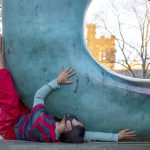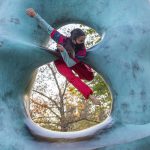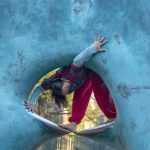A live 2-hour movement-based performance took place on November 22, 2020 on Scudder Plaza–the site that features the sculptures Fountain of Freedom by James Fitzgerald and Double Sights by Walter Hood. The performance followed a collection of improvisational scores chalked into the plaza. Once a score was completed, rope was wrapped around each sculpture and placed at the subsequent score. This socially-distanced performance foregrounded audience response through chalked prompts in the plaza that passersby could respond to.
The questions were:
- Whose land is this?
- Am I wasting my time?
- How are these sculptures related?
- What do you notice?
- What do you think of these sculptures?
- What questions do you have about this place?
Film Response
Audio Responses
This musical score, composed by Vince di Mura, combines site sounds from the live performance with elements inspired by James P. Johnson’s “Memories of You”.
This audio recording read by Haydon John ’21 of a text written by Ysabel Ayala ’21 draws inspiration from the Princeton University Art Museum’s interpretation of Fountain of Freedom.
Text
As one of the most iconic and historical destinations in the Princeton community, Scudder plaza is home to two monumental sculptures erected to revisit the life of Woodrow Wilson. Students and community alike can bask in the refreshing waters of James FitzGeralds Fountain of Freedom or pose for a picture underneath Walter Hood’s Double Sights.
FitzGerald’s brutalist bronze monument from 1966 stands at twenty-three feet tall and is situated strategically in line with the 2019-installed Double Sights. Pulling from his native landscape, FitzGerald was inspired by the beautiful and grotesque decay of the mountains of the Pacific Northwest. Weighing in at six tons, the sculpture’s combination of assaulting spires and rounded cavities reflects the conflict that surrounds Wilson’s legacy.
Hood’s work features a white column leaning on a black column, each with a selection of WIlson’s quotations that demonstrate his contested political views. Known for his work in using urban space and public art to create dialogue, Hood was motivated by the tension that revisiting Wilson’s history provokes. The fragile balance of the columns is complemented by the reflective stainless steel interior which invites viewers to momentarily reflect on Wilson and his critics alike.
Though these sculptures were assembled half a century apart, viewers can move between them in a matter of steps. As you tread on this contested territory, we invite you to take a second look.
Movement Scores (as used in the performance)
Find a home
two steps forward, one step back
Balancing act
Lurking from the shadows
The dance of white fragility
“this should be a place where you go to be heard“
listen
laboring across
“Princeton in the nation’s service and in the service of humanity“
For a more comprehensive history of Double Sights, please peruse this website.
